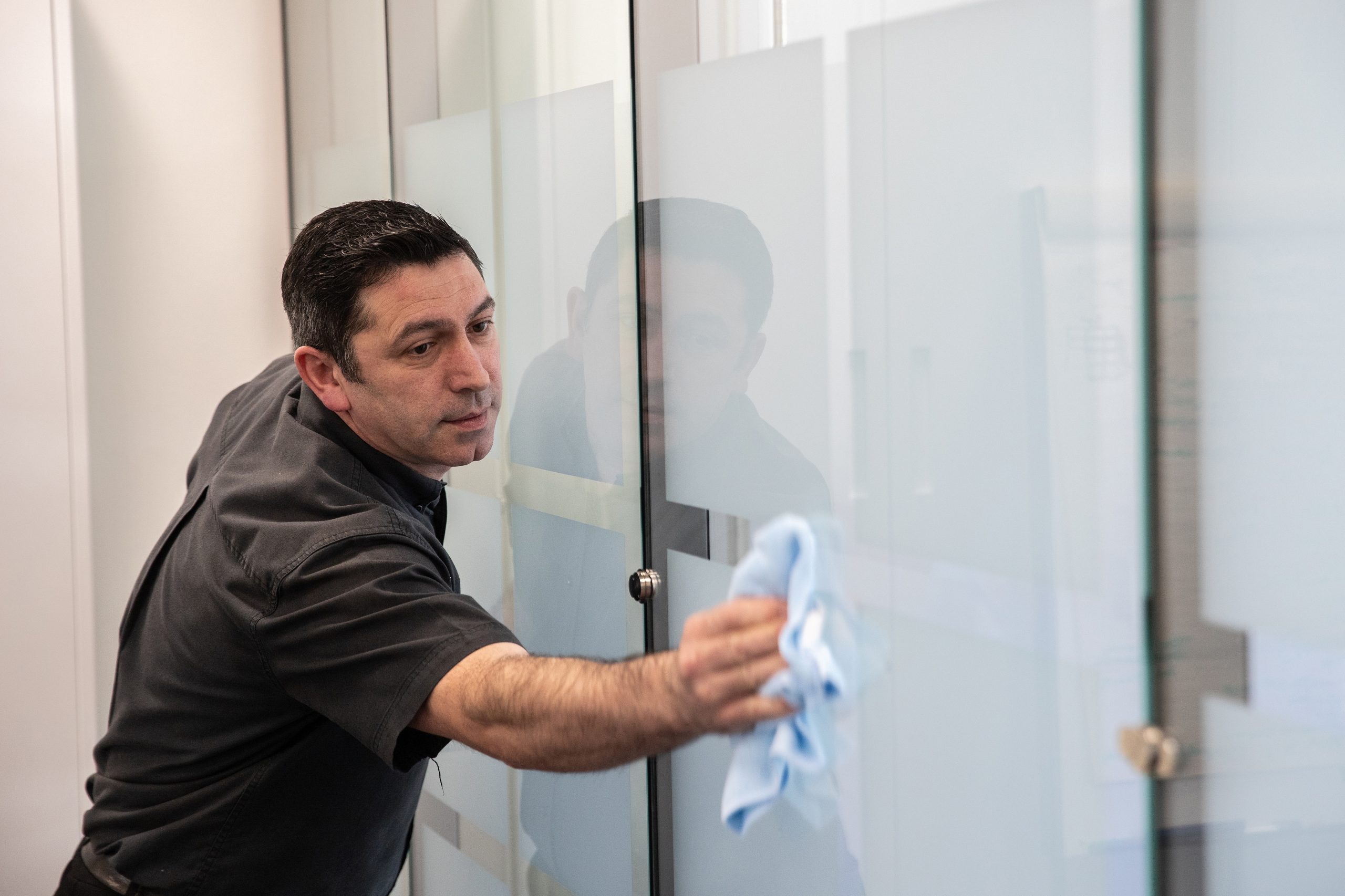The link between the workplace and employee wellbeing is greater than ever. HR leaders need to have a comprehensive plan in place for how the office will operate and be an attractive destination for employees.
Central to this will be engaging with employees and addressing their expectations and concerns. Looking ahead to the winter when there are more viruses and its harder to ventilate spaces, hygiene will be a top concern for many employees.
Hygiene and cleanliness
Lots of people are likely to be anxious about going to the office because of hygiene and cleanliness concerns. As The HR Director reported last April, cleanliness was top of the list of employee worries.
We may be a year on from this study, but the concerns have not changed. The pandemic opened everyone’s eyes to the importance of cleanliness and hygiene and people want to know that their workplace is safe.
Demonstrating this must be a part of the overarching wellbeing strategy, and will be critical not only to encouraging employees back to the office but retaining and attracting talent.
The good news is that a lot of businesses appear to recognise the importance of cleanliness. A recent FMJ report states that search terms such as ‘health and wellbeing in the workplace’ and ‘commercial office cleaning’ have seen big increases in the last year.
That’s a good sign but just the first step. Cleaning programmes need to be much more science-led than they were pre-pandemic. That includes collecting data, cleaning high risk touchpoints more frequently and demonstrating the results to employees.
A comprehensive programme is required that has buy-in from facilities management and HR teams.
Utilising a workplace hygiene programme
We believe that the ideal workplace hygiene programme should include three core pillars – science, technology and people.
Science is of course a fundamental part of any post-pandemic cleaning regime. Gone are the days when cleaning operatives would arrive after office hours to conduct a perfunctory clean.
Cleanliness now is about much more than whether something looks clean – it’s about testing for bacteria and focusing on hygiene. TVC swabbing can be used to check bacteria levels at different areas and adjust cleaning programmes as needed. Cleaning operatives can be informed of which areas have a higher count and spend more time in those places.
Swabbing can be carried out at a mix of agreed and random sites over time. This will help build up a picture of workplace hygiene and ensure that cleaning regimes can be adjusted when necessary.
We’ve been using our workplace hygiene programme, PRISM, at client sites across the UK which has given us data to identify trends. An analysis of more than 2,000 swabs at 27 locations showed that the top five high risk touchpoints are:
- Men’s toilet door handle
- Lift buttons
- Sink taps
- Door handles in communal areas
- Fridge handles
This will of course differ between businesses and sites, but this is a great example of how data can inform decision making – and the role that technology has to play.
Data-driven decisions
Technology can play a role not just in the data, but in how cleaning operatives are engaged, reporting for management teams and even empowering employees in the hygiene process.
QR codes can be placed around the office for cleaning operatives to scan. Rather than following a fixed rota each shift, they can scan the codes to receive clear instructions on what is required for that area.
The codes can also be scanned by employees to see when an area was last cleaned, request a clean or leave feedback. This makes employees an active part of the process and will help reassure them about the hygiene of their workspace.
All the data collected can be instantly fed through to a main dashboard that can be viewed at any time by management teams. This allows for real-time access during meetings and quick decision making.
Putting people first
The third pillar, and the one most pertinent to HR teams, is people.
Employees are central to any return to the office plan, and this is no different when considering cleaning and hygiene. HR teams must be empathetic to their employees’ concerns, which could range from desk hygiene to being in a fully occupied office.
Businesses should be in constant conversation with their staff as the picture is always changing, so workplace plans will need to as well.
When looking to invest in a workplace hygiene programme, consider if it will address employee concerns and how that will be communicated.
A cost-benefit analysis of the investment versus the cost of recruitment and retention would be a sensible exercise. Hygiene concerns will not go away post-Covid as we’re all much more aware of the importance of a hygienic workplace.
A cross-team approach
It’s critical to break down departmental silos for all elements of the return to the office. HR and facilities teams must be in regular contact and work together to ensure that a hygiene programme is not only successful, but that this is demonstrated to employees.
Failure to do so could see employees avoid the office – or leave altogether.







